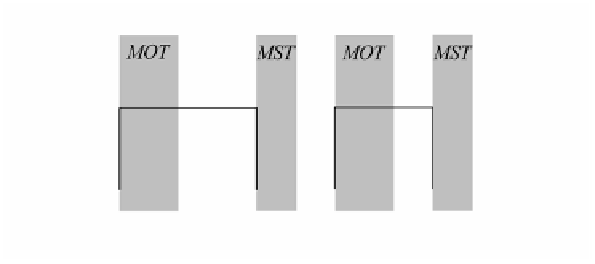Information Technology Reference
In-Depth Information
constraints. Thus the modeling of technical constraints reduces the search space
allowing a faster convergence to the optimal solution. Table 1 The definition of
Table 1.
Number of available configurations for two time discretizations
Δt
= 1 hour
Δt
=0
.
25 hour
MILP
AIS-LP
MILP
AIS-LP
M
2
24
2
96
N
24
2
96
2
M
N
16
.
8
×
10
6
79
.
2
×
10
27
576
9216
on/off intervals
τ
as optimization variables requires an algorithm without com-
plex operators. This consideration is due to the fact that it is not easy to keep
the feasibility of solutions. Thus algorithms with crossover and recombination
operators, like Genetic Algorithm and Evolution Strategy must be excluded
a
priori
. The AIS has the advantage of using the mutation operator only, and its
memory capability will be exploited in a future work to handle the time varying
scenarios in real time optimization. The AIS-LP performances can be enhanced
Fig. 3.
Representation of the variables for the AIS-LP approach: intervals
τ
j
by using problem-specific information:
-
creation of feasible initial population which satisfies the equality constraints
τ
i
=
N
intervals
−
N
on
MOT
−
N
off
MST =
N
free
(8)
i
-
modified mutation operator to generate of feasible-only clones.
For these reasons some immune operators must be customized to solve the spe-
cific problem. In particular the mutation operator is not related to the actual
fitness of the parent cell. Algorithms 1 and 2 report the pseudocodes of the
generator of new cells and mutation operator, respectively.
The use of problem-specific information drastically decreases the dimension
of the search space [2], making the AIS-LP approach more suited for high di-
mensional or fine discretized problems [7].



































